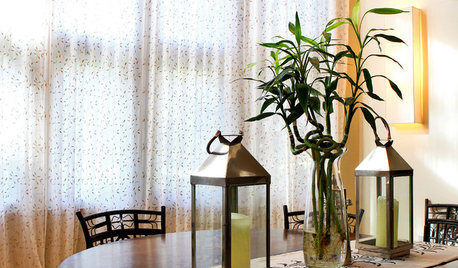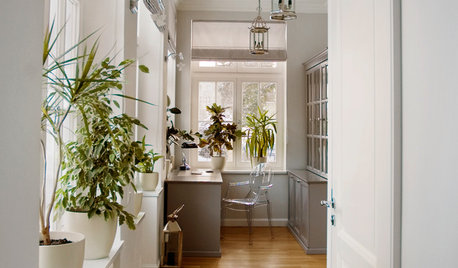Dracaena Fragrans care
lstickdo
15 years ago
Related Stories

HOUSEPLANTSAim High With This Tall African Houseplant
Corn dracaena can give you a big splash of green with little fuss
Full Story
HOUSEPLANTSGet a Dash of the Rain Forest With Madagascar Dragon Tree
This living decoration reaches up to 15 feet, has minimal needs and adapts to different light levels — just steer clear of fluoride
Full Story
DECORATING GUIDESImprove Your Style Fortune With Lucky Bamboo
Serve this versatile plant straight up or with a twist for auspicious living decor that thrives without soil
Full Story
GARDENING AND LANDSCAPINGLay of the Landscape: Tropical Garden Style
Create a vacation paradise in your backyard even if temperatures sometimes dip with these guidelines for tropical-style gardens
Full Story
HOUSEPLANTS8 Essentials for Healthy Indoor Plants
Houseplants add so much to our homes — and can thrive when grown in the right conditions. Keep these tips in mind
Full Story
GARDENING GUIDES6 Plants That Beat Butterfly Bush for the Wildlife Draw
It's invasive, a nonnative and a poor insect magnet. Check out these better alternatives to butterfly bush in the garden
Full Story
HOUSEPLANTS10 Top Plants to Grow Indoors
Brighten a room and clean the air with a houseplant that cascades artfully, stretches toward the ceiling or looks great on a wall
Full Story
PETSWorld of Design: Pampered Pets and Their 10 One-of-a-Kind Homes
Fall in love with these critters and their clever living spaces, from a cat playground in France to a chicken house in the U.S.
Full Story
HOUSEPLANTSHow to Create an Indoor Landscape
Apply principles and elements of design to help your indoor garden flourish
Full Story
GROUND COVERSGround Force: 10 Top Ground Covers for Your Garden
Protect your soil from weeds and drought this summer with a living mulch of ground covers
Full Story








jeannie7
johnh_or
Related Professionals
Wrentham Landscape Architects & Landscape Designers · Kenmore Landscape Architects & Landscape Designers · Anderson Landscape Contractors · Fort Payne Landscape Contractors · Holtsville Landscape Contractors · Huntington Landscape Contractors · Huntley Landscape Contractors · Kerman Landscape Contractors · Las Vegas Landscape Contractors · Lewisville Landscape Contractors · Seminole Landscape Contractors · Crowley Landscape Contractors · Shenandoah Landscape Contractors · Arkansas Interior Designers & Decorators · Fernway Interior Designers & Decoratorsdsirewmn07_yahoo_com
birdsnblooms
tapla (mid-Michigan, USDA z5b-6a)
Marina_11
Marina_11
Tiffany, purpleinopp Z8b Opp, AL
Marina_11